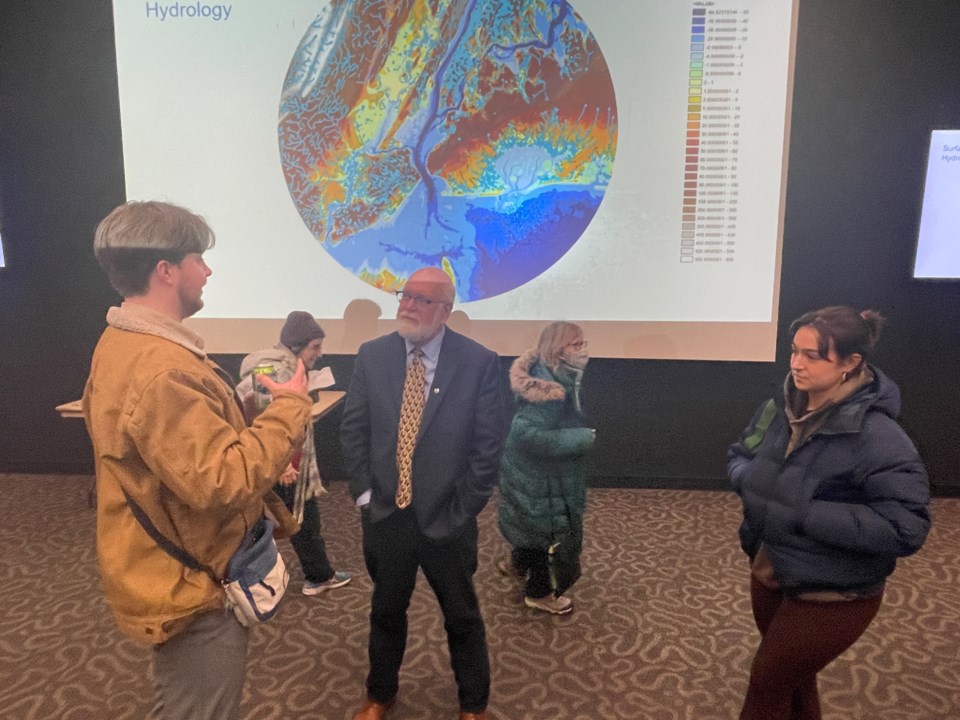Brooklyn has too many people living in flood zones when compared to the rest of the city and the city built with concrete needs to 'nature' itself out of future flooding, an expert in urban conversation said.
At a recent climate change event at Hunter College, Eric Sanderson, the vice president of urban conservation at the New York Botanical Garden, explained that while the increase in floods are linked to rising carbon dioxide levels and therefore climate change, it is also because of the lack of forestry and the predominance of asphalt and concrete in New York.
Rain over a forest leads to evaporation and transpiration, which does not happen with stony surfaces, he said.
"The city is a rock," Sanderson explained during "Soggy City: Flooding In NYC" presentation, hosted by NYC H20 and the Institute for Sustainable Cities at CUNY. "You pour water on a rock, it runs off. Trees run water more than rivers do."
When Hurricane Ida hit in September 2021, many Brooklyn streets were heavily flooded, including those in Crown Heights, Bed-Stuy, Carroll Gardens, and Williamsburg. At least 13 people died in the city due to Ida, including a Cypress Hill man from being trapped in a flooded basement. Last September, heavy rain brought up to 11 inches of flooding in some parts of Brooklyn. Many MTA trains and buses were disrupted, stranding many residents.
Sanderson displayed a map of each borough, including Brooklyn, and discussed their topography as well as the city's Blue Zones, or areas that "used to flood, does flood, and will flood," he said.
For Brooklyn, those areas are Coney Island, Red Hook, Gowanus, and even parts of Prospect Park. This is because they were either marshlands or lowlands. Coney Island once had large sand dunes that were leveled when railroads were first built.
During the presentation, Sanderson showed that while Brooklyn as a borough only has 4% of the city's blue zones, it has the most people living in blue zones compared to the rest of New York, at 309,102 people.
Sanderson concluded that the way to solve the city's flooding problem is by increasing nature's presence, or "nature your city," and provide more parkland for better water absorption.
When asked what he would tell the Brooklynites who live in the blue zones Sanderson answered, "I would tell them to think carefully about where you live. Because you won't be able to live there in the future. I'm not telling them to leave tomorrow, but in some places they won't be able to live."
During a Q&A after the presentation, an audience member asked about the city's Million Trees initiative. Sanderson replied that although it has good intentions, the trees are being put into the ground with packs of plastic wrapped around the ends of their trunks which is mixing the soil and plastic together. Sanderson also noted it has not been easy to get any major changes made because some want to hold onto old ideas.
"The city only wants to change during a crisis. Well, here is our crisis," he said.




